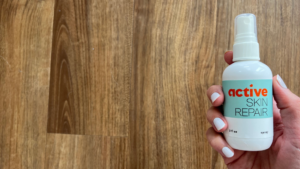Do you feel your letdown? What does it feel like to you? I feel my let down in my breast as well as my head. In my breast it feels like a pins + needles tingly tightening, and in my head in feels like a wave of G-forces / the bottom of a rollercoaster heaviness, especially in my mouth and on the sides of my face. Some women don’t feel their let down at all and only know it happens because they can hear the baby suddenly begin to swallow.
WHAT IS A LETDOWN
What are we even talking about? Did you know that the human breast is not just a constantly-ready source of milk- meaning that when a baby suckles, they only get a few drops of milk, if any? The nipple must be continuously stimulated, whether by baby or a pump, for anywhere from a few seconds up a minute or more before “letting the milk down” to the baby. This is why this process of milk rushing toward and out of the nipple is called a “letdown.” A breast may letdown one or multiple times per nursing or pumping session. When one breast is stimulated to trigger a letdown, the other breast will also simultaneously let down. That “other side” that isn’t being fed on or pumped can be tricky to manage, especially if you are a leaky mama. Sometimes the milk doesn’t leak and is instead waiting just behind the nipple, whereas other times it may begin to drip out or sometimes even shoots out several feet!
Welcome to the world of nursing pads, my friends. There are reusable bamboo/cotton types, or disposable types that resemble mini menstrual pads. I often suggest using the disposable pads for the first month when the leakage volume is highest, and then switching to something more sustainable. If you are a super leaky mama, you may be going through 10-12 reusable pads per day, which is a LOT of laundry. This is why I suggest biting the bullet and using the highly-absorbable disposables for a short time period. As always, experiment with different methods until you find something that what works best for you!
HOW MILK EJECTION REFLEX WORKS
A letdown, or milk ejection reflex comes from a surge of oxytocin stimulated from suckling at the nipple, whether by nursing or pumping. You may have heard about oxytocin being the “love hormone,” because it is released when people bond socially. It is important for the development of attachment, and plays a hugely important role in the entire process of motherhood – from inducing labor to establishing breastfeeding to bonding deeply with your baby. This is also why many women are able to feel their letdown not only as a physical sensation in the breast, but as a quick 4-5 second surge of happiness or feeling “high” during the process. It has a calming effect, aids sleep, and fosters altruism. Oxytocin can reduce blood pressure and cortisol. Ahhh, I feel the relaxation already. This is great for a postpartum mother who may be feeling overwhelmed or sleep deprived. These little hits of oxytocin 10-12 times per day can be hugely helpful for maternal mental health.
OXYTOCIN PHYSIOLOGY
Oxytocin causes smooth muscle contraction– just like it does at the uterus during birth. At the breast, oxytocin binds to and causes tiny muscle fibers to contract around the alveoli (where milk is formed) inside the mammary glands. This causes milk to shoot through the milk ducts and out of the nipple. This nipple-uterus connection of oxytocin explains many things. It is the source of “afterbirth” pains most women experience for the first several days after their baby has been born. Every time the baby nurses, the uterus contracts – this helps it prevent hemorrhage, expel any further clots or tissue, and eventually reach it’s pre-pregnancy size. This connection is also sometimes used DURING labor via nipple stimulation to help bring on stronger contractions. AND this is often why pregnant women experience a contraction or two after orgasm. Fascinating, eh?!
WHAT IS D-MER
We cannot discuss oxytocin and letdowns without mentioning something called D-MER. This stands for Dysphoric Milk Ejection Reflex and is characterized by a sudden dysphoria, or feeling of negative emotions – namely sadness or anxiety, occurring just before the milk is released. It lasts from just a few seconds up to two minutes long, and is caused by an inappropriately fast fall of dopamine in relation to the increase in oxytocin at the initiation of a letdown. It is a reflex and thus not associated with painful nursing, nipple damage, postpartum depression, or other maternal mental health issues. Treatment is tricky, but many women find a lot of relief in just knowing that this is a medical condition and not an emotional dysregulation. This condition is not common, but I believe it is important to know about.
TIPS TO INCREASE LETDOWN POTENTIAL
Now, here are some quick tips to improve your letdown by way of decreasing the time it takes to occur and increase the amount of oxytocin released thus the amount of pushing power to empty the breasts of the milk inside. These things improve letdown potential because – drumroll – they increase OXYTOCIN!
See, science is cool!
Body literacy is cool!
This list is geared towards increasing the potential of the moment, not overall supply. There are great herbs and nutrients for that, but that’s a post for another time! Okay, read on if you’d like a boost!
SKIN TO SKIN
Yep. You’ll never hear the end of it. The physiological, mental, emotional, and developmental benefits of skin to skin go on and on. Snuggle up with your squishy sweetie and settle in.
DEEP BREATHING
Take a few deep slow breaths at the start of nursing or pumping. Breath regulation helps to reduce stress and the hormones associated with it, which can inhibit oxytocin. This is also why being as relaxed and stress free as possible during birth is so important – so oxytocin can work its wonders and progress the labor.
GET HANDSY
Many babies slap, grab, smoosh, and punch the boob while they’re nursing. They may even “twiddle” the other nipple, knowing by experience and instinct that this will increase the letdown they get. Babies are smart. Let them do their thing as much as you can tolerate. If your baby isn’t as handsy, you can always tap your breast with your finger tips, lightly massage, or even gently squeezing a variety of areas on the breast as your baby nurses. You can also try pumping your other side while baby nurses – this is a great way to build a stash for date nights or going back to work – but it is tricky. Something like the Haaka hand pump that uses a suction-action to work rather than being plugged into the wall, is an easier method.
SMELL YOUR BABY
Pheromones are strong, and most mamas will agree that the smell of a newborn’s head causes exploding waves of brain activity and I WANT TO CRAM YOU IN MY MOUTH type feelings. The main hormone responsible for this feeling – is oxytocin. Sniff your milky days away – doctor’s orders.
THE RIGHT ENVIRONMENT
Find presence. Remove distractions. Put your phone down, and really look at your baby. Get warm and comfy. Turn the lights down low. Be with them. Smell them in, gaze in their eyes – not only for the maximized oxytocin benefit but for the sake of the moment. These are the days. They’re long, and sometimes so tough. And, they’re the precious fleeting days your babe is this small. Obviously this is not always reality. And if this is not just your first baby, this scenario is even more tricky to obtain. It’s ok – do you. If you are pumping, use the phone for photos but try not to get sucked into social media worm holes.
…AND IF YOU’RE PUMPING
Things are a bit different with a pump. Many women don’t respond to breast pumps at all unfortunately, but the vast majority do. There are many ways to increase the volume of your pumps that I won’t be able to cover in this article but my favorite breastfeeding resource, www.KellyMom.com , is your place. Since your baby isn’t in your arms, looking at pictures of them is helpful. Really get into it – swipe through all your favorites and let your mind go to those moments. You can also bring an article of clothing your baby has worn to get that same pheromone boost we just discussed via smell. Other ideas include the manual/hands on help of massaging your breasts while pumping, as well as pumping both sides at the same time versus just one side in isolation. You’ve got this!





